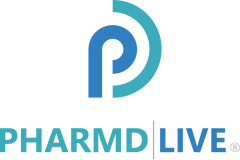Remote patient monitoring isn’t telemedicine but is rather a category of telehealth, which is important for several reasons, such as for coding and billing.
Medicaid explains how remote patient monitoring is different from telehealth by explaining that, “Telehealth includes such technologies as telephones, facsimile machines, electronic mail systems, and remote patient monitoring devices, which are used to collect and transmit patient data for monitoring and interpretation.
While they do not meet the Medicaid definition of telemedicine, they are often considered under the broad umbrella of telehealth services.”
Remote patient monitoring uses an interactive device between providers and patients outside of the provider’s organization, as well as electronic information and telecommunications technologies to support long-distance clinical care.
Medicare coding and billing guidelines from April 2020 outline that there are four CPT codes covering RPM: CPT 99453, CPT 99454, CPT 99457, and CPT 99458 — and none are considered telehealth services codes, covering everything from individual and group kidney disease education services, psychiatric diagnostic interview exams, advance care planning, psychoanalysis, and annual wellness visits (AWV).
In addition to these differences, it’s also important to differentiate between RPM and patient monitoring.
Remote Patient Monitoring vs. Patient Monitoring
The difference between remote patient monitoring and patient monitoring is critical. Traditionally, patient monitoring systems operate in controlled healthcare facilities.
However, remote patient monitoring utilizes equipment in the patient’s home using new capabilities, such as third-party platform providers for video conferencing capabilities and cloud technologies synched with RPM devices.
How Does Remote Patient Monitoring Work?
The process of implementing a remote patient monitoring program is fairly straightforward.
In fact, the RPM program model can be explained in just four basic steps:
- A provider launches a remote patient monitoring program for patients. The aim is to use remote patient monitoring to collect a wide range of patient health data and information — such as blood pressure, heart rate, vital signs, weight, blood sugar levels, etc.
- A provider identifies a patient that would benefit from remote physiologic monitoring. The provider then creates an RPM treatment protocol with the patient’s consent.
- The patient is given a health data collection device. The device — such as a blood pressure monitor, weight scale, blood glucose meter, spirometer, pulse oximeter, or ECG machine — is connected electronically via mobile networking or Bluetooth functionality.
- Health data is collected by the device and electronically transmitted from patient to provider. The results are compiled for analysis and determination of the next steps in treatment.
Providers delivering remote patient monitoring must also determine coverage, establish a patient base, choose a device, establish a patient intake program, develop policies and procedures, and train staff.
For patients, access to remote patient monitoring services will depend upon the quality of the program established for them as well as available assistance with technology.
